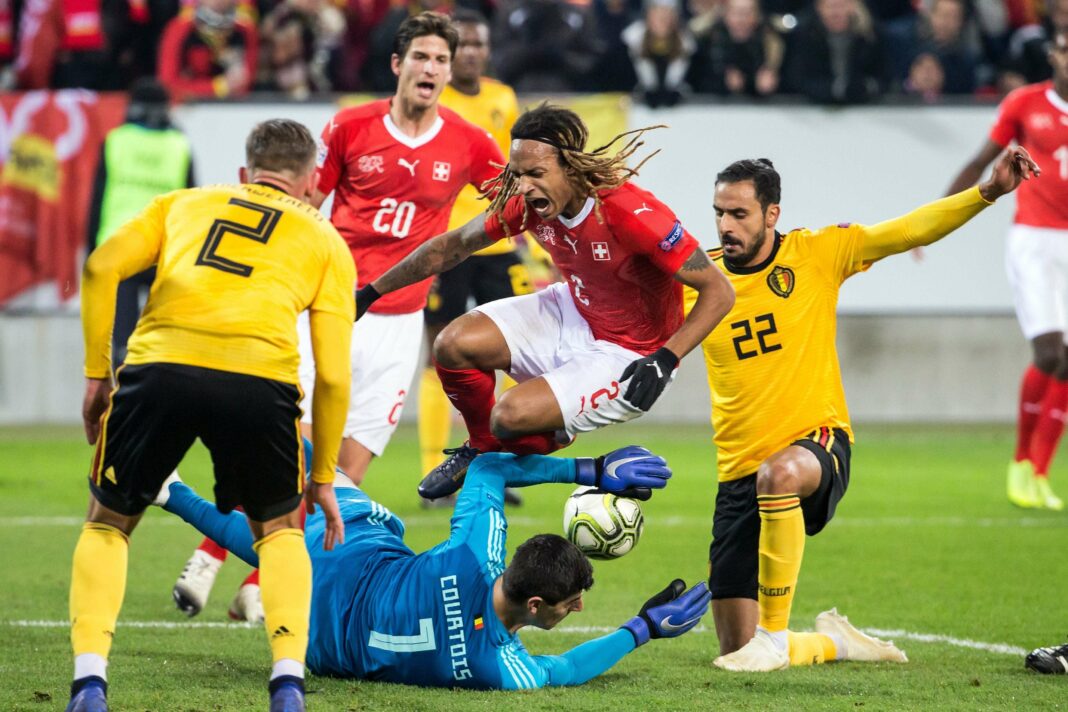Recent coalition talks at the Military Academy in Brussels culminated in an agreement among five party leaders, ending an eight-month electoral process. Initially intended for the historic Val Duchesse Castle, the change of venue due to heating issues sparked criticism. Additionally, a comparison between Belgium and Switzerland highlights their similarities in language and governance structures, yet historical differences and regional identities continue to complicate Belgium’s political landscape, contrasting with Switzerland’s cohesive federalism.
Coalition Talks at the Military Academy
In a dramatic turn of events to finalize the coalition negotiations for Belgium’s new government, the five party leaders convened last week at the Military Academy in Brussels. After several nights of intense discussions, they triumphantly announced their agreement late Friday, marking the conclusion of an eight-month-long electoral saga.
However, this venue was merely a temporary fix; the politicians had originally planned to gather at the historic Val Duchesse Castle, a renowned location for past government formations. Unfortunately, heating issues at the castle forced them to change their plans, leading to a wave of mockery from critics who view this as a symbol of Belgium’s governance challenges. It has become a common pastime in Brussels to lament the country’s infrastructural shortcomings, often overlooking similar issues in other major European cities.
Similarities and Differences: Belgium and Switzerland
The comparison between Belgium and Switzerland is frequently discussed, with many asserting that while both nations are quite alike, they have yet to fully unlock their potential. But is this perception accurate?
At first glance, notable similarities emerge. Belgium boasts three official languages, while Switzerland has four. Interestingly, the “smallest” language in both countries—German in Switzerland and Romansh in Belgium—constitutes less than one percent of the population.
Population figures are comparable as well, with Switzerland hosting around 9 million inhabitants against Belgium’s 11 million. Geographically, Switzerland is larger, covering 41,000 square kilometers, of which only about 31,000 are suitable for productive use—paralleling Belgium’s usable land.
Politically, both countries share a federal structure, granting substantial autonomy to Belgium’s regions—Flanders, Wallonia, and Brussels—as well as to Switzerland’s cantons. Municipalities in both nations also enjoy significant powers.
Additionally, both countries share a passion for chocolate, each claiming superiority in production. The linguistic quirks of counting—such as “septante” for seventy and “nonante” for ninety—further illustrate their unique cultures. Notably, even the renowned Belgian comic scene drew inspiration from Swiss influences, exemplified by Hergé’s “Professor Bienlein,” modeled after Swiss physicist Auguste Piccard.
Yet, beneath the surface, a deeper examination reveals contrasting historical trajectories. Belgium’s centralized state, established in 1831 following independence from the Netherlands, was heavily influenced by its French-speaking elite, particularly during the colonial era under King Leopold II. In contrast, Switzerland has long embraced a more equitable linguistic representation since its federal inception in 1848.
The historical dominance of Francophones in Belgium still resonates today, particularly in Brussels, which is predominantly French-speaking despite its geographical location in the Flemish region. Consequently, Flemish separatist sentiments can be traced back to historical grievances, further complicated by modern political dynamics.
As the Flemings continue to assert their identity, they remain reluctant to relinquish their claim to Brussels, the capital of the EU and Belgium itself. In the words of political scientist Caroline Sägesser, this has led to peculiar situations, such as Flemish separatists struggling to order a beer in their own language after parliamentary sessions.
As the fight for federalism persists, the differences between Belgium and Switzerland become more pronounced. Belgium’s federalism, unlike Switzerland’s, has not developed organically, resulting in a centralized governance structure where national powers still dominate. This contrasts sharply with Switzerland’s decentralized model, where cantons enjoy substantial autonomy from the outset.
In Belgium, the funds collected by the state are distributed to various regions, historically through a method known as “waffle iron policy,” which aimed for even distribution across regions but contributed to the country’s mounting debt. Over the years, Belgium has gradually moved away from this approach.
While both nations grapple with regional identities, Switzerland has managed to foster a sense of national cohesion over the past 175 years, thanks in part to the respectful treatment of its diverse language and cultural groups. In Belgium, however, regional rivalries still overshadow a unified national pride, highlighting the complexity of their respective identities.
